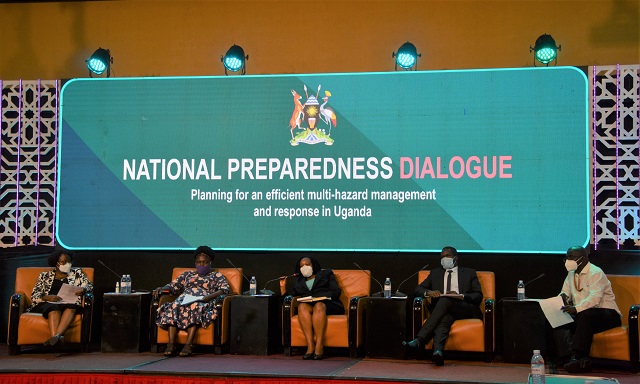
Kampala, Uganda | THE INDEPENDENT | The government has commenced a process to develop what should be a more coordinated and effective National Disaster and Risk Management Plan amidst criticism of how it has handled recent occurrences.
The move spearheaded by the Office of the Prime Minister in partnership with the Food and Agriculture Organisation, FAO and the World Food Program, comes amidst increasing disaster incidents and emergencies.
Uganda is ranked 15th globally and first in Africa among countries most affected by natural disasters, according to a report by Statistica.com, in which Uganda is listed as a country prone to floods, landslides, droughts, locusts, windstorms, hailstorms and lightning. While the report notes that there were no earthquakes in Uganda, the country is hugely vulnerable.
On top of emergency needs arising out of these disasters, Uganda is also one of the biggest hosts of refugees, with 1.549 million currently. But analysts conclude that Uganda is spending the bulk of its resources on responding to disasters as opposed to managing and reducing disaster risks.
The World Food Program Deputy Country Director, Ryan Anderson has questioned why Uganda fails to effectively respond to disasters, which the country knows always happen. He cites the seasonal droughts in Karamoja which come with the scarcity of water and food.
“We know that the lean season occurs every year. We know when it occurs. We know which areas are often affected the hardest. And we know which people are most at risk. So why did this many people have to suffer?” he wondered.
Andersen says that since the government and even the development partners or civil society cannot continually finance the rising costs of response to human emergency needs, the focus should be on strengthening preparedness and meeting commitments. This will include anticipating the foreseeable as well as the unforeseeable events, integrating disaster risk reduction in response, preparedness and ensuring an effective response capacity at all levels of society.
Similarly, the Country Representative of the Food and Agriculture Organization, Antonio Querido says with good planning, a lot can be made and people’s lives and livelihoods and national resources saved.
They were speaking at the National Disaster Preparedness Dialogue held in Kampala over the last two days. The discussions on the National Preparedness Dialogue began back in April 2021, between the OPM and FAO in the aftermath of the locust invasion, with the aim of promoting learning, and increasing preparedness to mitigate the impact of future invasions.
The UN agencies say that the limited impact of the invasion on Uganda unlike what happened in Ethiopia, Somalia and Kenya, is because of luck, not effort. They add that effective control measures notably in Ethiopia, Somalia and Kenya ensured little impact on Uganda in addition to the locusts arriving when Uganda’s crop production was off-season.
“Nonetheless, an estimated 750,000 households were affected in terms of their food security and livelihoods across Eastern and Northern Uganda, highlighting Uganda’s vulnerability to the desert locusts. We can consider ourselves lucky because we were not prepared,” Anderson says.
The Resident Representative of the United Nations Development Program, Elsie Attafua said the lack of coordination, which they are now trying to heal, has cost the country more than half a trillion shillings in failed disaster management in one year.
The development of the Disaster and Risk Management Plan is planned to cost 50 million US Dollars.
The draft proposals show that 9.5 trillion Shillings will be set aside to implement the plan. According to the initial proposals, the plan is structured into short term, budgeted for 3.6 trillion Shillings, mid-term (two years) 2.67 trillion, while 3.1 trillion Shillings is budgeted for the long-term.
The objectives of the Disaster and Risk Management Plan include improving the understanding of disaster risk, hazard and vulnerabilities at all levels and strengthening disaster risk coordination and governance with clarity in roles and response action of all actors, communities and individuals. Others are; advocating for investments in disaster risk reduction, enhancing disaster preparedness for effective response and to “Build Back Better” in recovery, rehabilitation and reconstruction, increasing resilience to emerging disaster risks like Covid 19 and other pandemics.
It also aims at strengthening “scientific and technical capabilities” through collaboration with the private sector, media and academia, as well as promoting mainstreaming of disaster risk management into development planning processes, from national to parish levels.
The Country Director WFP, Abdirahman Meygag stressed the need for early warning systems and said the organisation will help in ensuring disaster information systems are in place especially in vulnerable areas.
The State Minister for Disaster Preparedness Esther Anyakun said among the plans in the midterm, is the creation of emergency response teams in or near prone areas. This has been one of the impediments to saving lives, and she hopes it will go a long way in improving the sector.
******
URN
 The Independent Uganda: You get the Truth we Pay the Price
The Independent Uganda: You get the Truth we Pay the Price



